It was August 1998 — I was in Idaho for the first time, on a job interview, where I hoped to become the editor of a twice-monthly outdoors magazine, while also editing the local newspaper’s weekly farm and ranch guide. I didn’t know the first thing about farming or ranching, but as a journalist, I was fairly confident I could learn on the go. I did know a fair bit about fishing and enough about hunting to get by. That was the appeal, of course—writing about the outdoors and time outside in what was then one of the best-kept secrets in America.
At least among hunters and anglers, that is.
For farmers and ranchers, the fertile volcanic soil and the wide open range managed by the Bureau of Land Management were famous. And they still are. To this day, breweries of all sizes — from industrial-sized giants like Molson Coors and Anheuser-Busch to small-town craft operations — crave the barley that grows from the black soil in the shadows of the Tetons. And our potatoes? Well, they’re famous.
But none of that mattered to me, at least not at the time. As part of my job interview, my prospective employer rowed me down the South Fork of the Snake River. We put it at Byington and took out at Lorenzo. In late summer, during good water years, it’s a full-day float and it’s a stretch of river that’s home to some really impressive brown trout. I was certain that my “guide” for the day would want me to throw streamers against the bank all day in hopes of landing a behemoth, but he handed me a 5-weight and tied a single, size 8 Dave’s Hopper to the tippet.
“We probably won’t need to change flies,” he said confidently. I, of course, was thrilled. The notion of casting dry flies to rising trout all day was appealing, particularly for an angler that spent the previous season swinging heavy lines and big streamers for Humboldt County steelhead — with very little success, I might add.
As predicted, we didn’t change fly patterns. We went through a dozen hoppers, though, as the river’s amenable cutthroats and the occasional angry brown grabbed flies within inches of the South Fork’s undercut banks. Toward the end of day, we beached the drift boat on a gravel bar and walked a side channel just a few hundred yards from the take-out. I made a good cast, tight against the bank and watched as a head the size of my fist came out of water and slurped in the hopper pattern. A few minutes later, I released my first 20-inch brown from the South Fork.
I’ve been in love with the best dry-fly river in America ever since.
A cavalier boast? Maybe. But results don’t lie, no matter how anecdotal they are.
Unfortunately, I didn’t get the job that summer, which was an ego blow. A year later, I made it right by taking a writing and editing gig with another regional paper and I arrived in eastern Idaho at the tail end of August in 1999. And the first place I fished was that side channel I visited the year before.

I didn’t coax another big brown to the top, but I caught half a dozen nice cutthroats from the river that first afternoon upon my official arrival as an Idahoan. And I caught them on fat dry flies — high-floating foam imitations that would have been unlikely to pull a trout off the bottom in one of the trophy trout rivers in my home state of Colorado. But on the South Fork, the fish always seem to be looking up. And twenty plus years later, largely due to the South Fork, I still claim Idaho as home.
It’s amazing what good fishing can do, right?
Fishing the South Fork
The South Fork is a big river. It’s a tailwater that is sourced from the bottom of Palisades Reservoir which, during high-water years, straddles the Idaho-Wyoming border. In low-water years, the river flows into Idaho before backing up behind the dam. But, regardless of the flows or the amount of water stored in reservoirs above it, the South Fork shines as a dry-fly destination.
Certainly, anglers fishing the South Fork can swing streamers for big browns. And you can dredge the deep runs with double-nymph rigs (especially if you like whitefish). You can even swing soft-hackles with great success. But I maintain that, largely because of the river’s iconic Yellowstone cutthroat trout, the South Fork is America’s best river for dependable and often stellar dry-fly fishing.
The South Fork’s Dry Fly Seasons
Spring
Starting in the spring with burgeoning Blue-winged Olive hatches on cloudy days, the river boasts hatch after hatch after hatch. Once the BWOs have retreated, usually right around Mother’s Day or so, you can expect dependable caddis action. Spring flows, depending on the water year, can be big on the South Fork, so most of the fishing takes place up against the banks, where caddis are clinging to riverside willows. Casting a light brown or a tan size 12-14 crippled caddis pattern can be absolutely deadly.
Early Summer
Once summer starts (and maybe even a bit before) Green Drakes start popping. These big mayflies are at their zenith on cloudy or rainy days – the Green Drake might be the most underrated hatch on the river. Once summer starts in earnest and the flows kind of level out (again, it’s totally dependent on the water-storage situation and what’s coming out of the bottom of the dam), the river’s most-dependable hatch starts. Pale Morning Duns are delightful, size 14-16 mayflies that come off the river in waves and the trout absolutely love them. Even better? Their cream-colored bodies are easy to see and identify. During blanket hatches, there can actually be too many bugs on the water, and it makes sense to throw something else – that’s how prolific these bugs can be.

Finally, sometime right around the Fourth of July, the river’s epic salmonfly hatch — the hatch for which the river is best known — begins. These big stoneflies offer the first chance of the year for anglers to see big fish on top. And what constitutes a big fish on the South Fork? Browns that rise for the giant (does size 4 sound big?) flies can push 26 inches.
Late Summer
Once the stoneflies start to flag, it’s hopper season. And it’s epic. Big bugs — Chernobyls, Fat Alberts and every fat, foam ant or hopper pattern ever created — bring big browns, cutthroats and rainbows to the top. This is the time of year when the big fish, and not just the river’s cutthroats, throw caution to the wind and work to grab giant mouthfuls of protein whenever they can. And, yes, the PMDs are still hatching.
Fall and Winter
Come fall, the olives are back with a vengeance. And, on sunny winter days, midges pop and the river’s trout and whitefish just can’t help themselves. They’re back on top again.
The Best in America?
So, is Idaho’s famed South Fork of the Snake River the best dry fly river in America? I think so. Feel free to try and change my mind, but 23 years of stored angling data leads me to believe my observations are correct. I’ve spent too many days connected to trout on the South Fork to believe otherwise.
IF YOU GO
Choosing a lodge
There are a few highly regarded guides and outfitters along the South Fork, and the river can be a great DIY destination if you have your own boat. If not, consider South Fork Lodge, which was recently acquired by well-known angler and guide Oliver White in partnership with television personality Jimmy Kimmel. The lodge is perfectly situated at the top of the river’s famed canyon stretch, and it offers unmatched amenities to visiting anglers, including what might be the best whiskey bar in the West (yes, seriously).

When to go
The South Fork is a river for all seasons, but it fishes best from late spring until well into the fall. Winter is doable, but guides have likely moved south and lodges are closed. It also gets very cold, with below-zero temperatures common from December through early March.
How to get there
The region is serviced by two really solid regional airports — one in Idaho Falls and one in Jackson, Wyo. Both offer flights from major hubs all over the country.





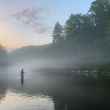
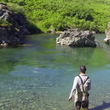
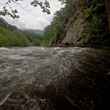



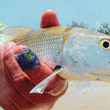
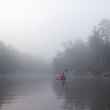




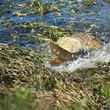



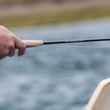
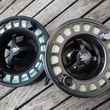



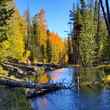
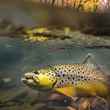


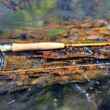
Comments
Joe replied on Permalink
Sounds like heaven
Roger Thompson replied on Permalink
This guy is great at writing and fishing! Just so you know when he describes a fish with a head as big as his fist, he has big, big hands. And a great sense of humor!
Michael Kelly replied on Permalink
As a small child and growing up fly fishing my mom was Born to raise over in Eastern Idaho from early spring into late fall the Henry's Fork for dry fly fishing is incredible yes I fished the South Fork at the Boise that's a hard toss up.
Cody Lee replied on Permalink
Not even the best dry fly river in eastern Idaho, but thanks for not blowing those up.
Jim Christensen replied on Permalink
I would say the Big Hole River and the Madison River in MT are just as good.
Jared Luthy replied on Permalink
Don't waste your time going there it's not as great as it is made out to be. Every year one or two driftt boats get sunk on that section. An experienced guide list his life at the lorenzo bridge several years ago. That section is the most dangerous of alll the river.
curt replied on Permalink
the lack of public wadable water keeps this off the list for me. Thanks for diverting fishermen to the snake and away from better water.
Pages